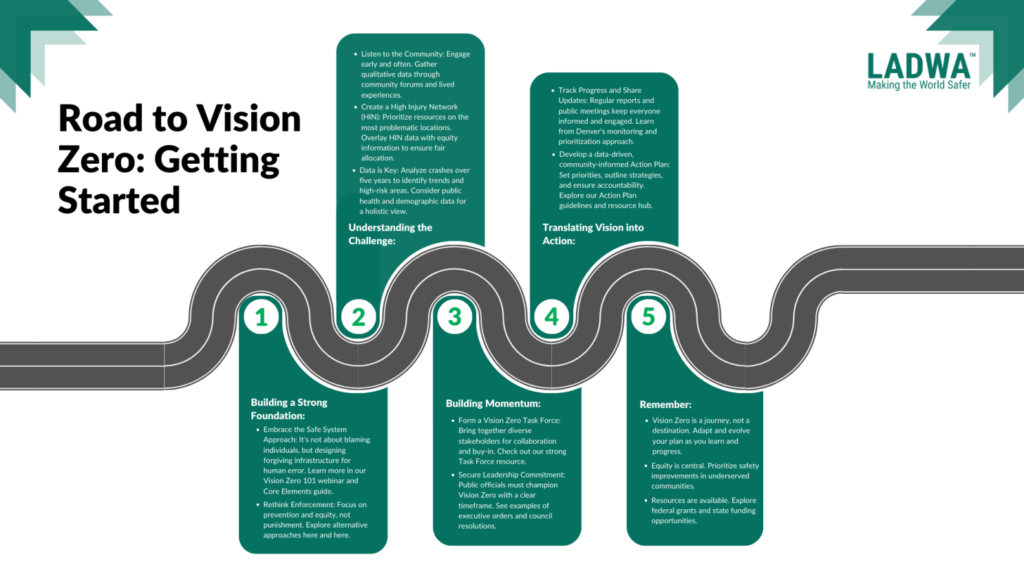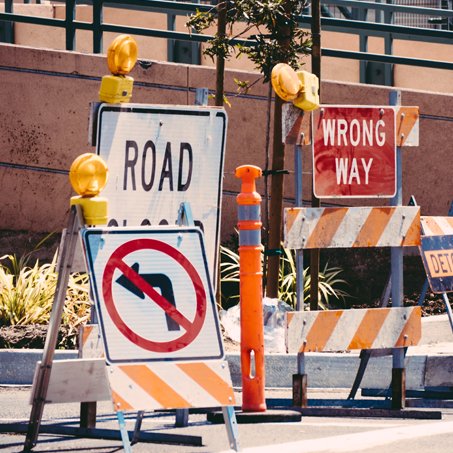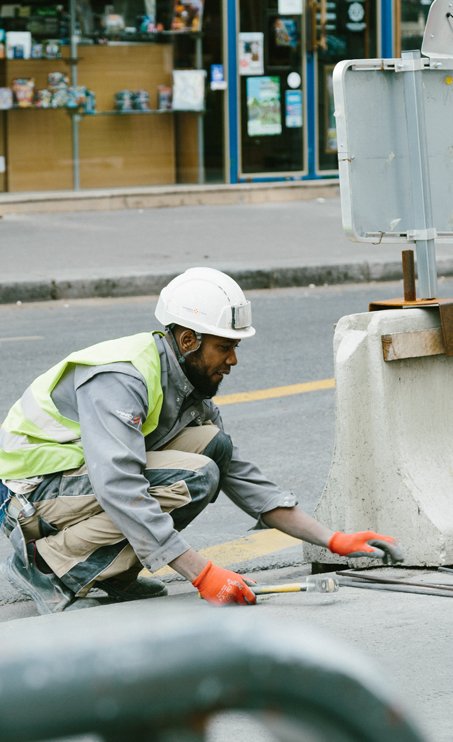Introduction:-
Imagine a world where traffic deaths and serious injuries are not accepted as a daily statistic. A world where streets are designed for people, not just cars. That’s the vision behind Vision Zero, and it’s a reality countless communities are actively pursuing.
This guide offers 5 key steps to creating safer streets, whether you’re a mayor, a transportation planner, or just someone who cares about making your community safer.

- Embrace the Safe System Approach: It’s not about blaming individuals, but designing forgiving infrastructure for human error. Learn more in our Vision Zero 101 webinar and Core Elements guide.
- Rethink Enforcement: Focus on prevention and equity, not punishment. Explore alternative approaches here and here

- Data is Key: Analyze crashes over five years to identify trends and high-risk areas. Consider public health and demographic data for a holistic view.
- Create a High Injury Network (HIN): Prioritize resources on the most problematic locations. Overlay HIN data with equity information to ensure fair allocation.
- Listen to the Community: Engage early and often. Gather qualitative data through community forums and lived experiences.

- Form a Vision Zero Task Force: Bring together diverse stakeholders for collaboration and buy-in. Check out our strong Task Force resource.
- Secure Leadership Commitment: Public officials must champion Vision Zero with a clear timeframe. See examples of executive orders and council resolutions.

- Develop a data-driven, community-informed Action Plan: Set priorities, outline strategies, and ensure accountability. Explore our Action Plan guidelines and resource hub.
- Track Progress and Share Updates: Regular reports and public meetings keep everyone informed and engaged. Learn from Denver’s monitoring and prioritization approach.
Conclusion
- Vision Zero is a journey, not a destination. Adapt and evolve your plan as you learn and progress.
- Equity is central. Prioritize safety improvements in underserved communities.
- Resources are available. Explore grants and state funding opportunities.
Join the movement! Together, we can create safer streets for everyone. Visit our website for more resources and connect with the Vision Zero Network community.
Let’s discuss! What are your biggest challenges and questions about implementing Vision Zero? Share your thoughts in the comments below.









